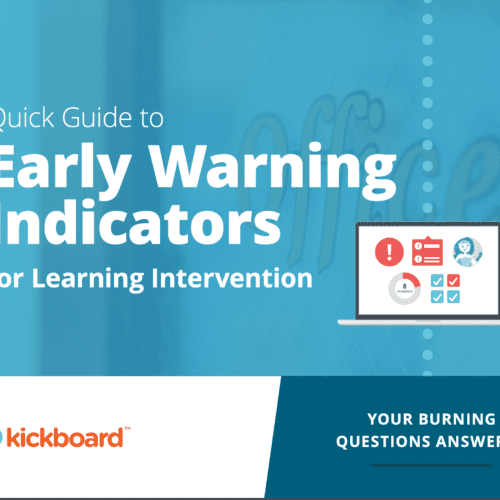
One of the key elements of effective communications is clarity. If readers can’t understand your message, they may go somewhere else for information. Or they may stay but misunderstand what you were trying to convey. Such misunderstandings could be costly. In 2018, a missing comma in a state law resulted in Maine dairy drivers receiving a $5 million legal settlement. That incident is an extreme case, but it is a striking example of why clarity in writing is so important.
Below are 17 principles that can help you produce clearer text.
- Organize your text to make it easy to understand
- Include context for greater ease of understanding
- Start off strong and clear
- Insert subheads as reading “signposts”
- Use the active voice for strong, clear writing
- Be concise to enhance writing clarity
- Keep your words simple to make your meaning clear
- Stick with specifics to improve readers’ understanding
- Use familiar words
- Transitions enhance the logical flow of your text
- Stay away from noun strings
- Make sure pronoun references are clear
- Watch out for misplaced phrases
- Be mindful of where you place modifiers
- Punctuation placement is also important
- Tell readers what to do
- Clarity in writing comes via editing
1. Organize your text to make it easy to understand
A major component of clarity in writing is the structural clarity of your text. Readers should feel as if they are smoothly progressing from point A to point B and then on to point C.
You can organize your text in a variety of ways:
- Chronological or narrative (as in a story progression)
- Logical or categorical (arranging points into specific groupings)
- Spatial (using geographical location or physical size)
- Cause and effect
- Problem and solution
- Compare and contrast
- Order of importance
- Step-by-step instructions
Starting your writing project with an outline can help you figure out the best way to organize your text.
2. Include context for greater ease of understanding
When you know a subject well, it’s easy to forget that most of your readers won’t have the same depth of understanding. Your message will need to be put into context in order to be clearly communicated.
You can provide context by comparing your topic to something the reader already understands. E.g., you could say:
Alaska measures 663,267 square miles.
Or you could say:
Alaska is bigger than Texas, California, and Montana combined.
The first statement is the most exact, but the second statement it paints a clearer picture for readers.
In addition to making comparisons, you use what readers are likely to already know as a starting point for introducing new information. E.g., if you’re writing an article about how companies can become certified for a certain standard, you could start by briefly reminding readers that they’ll benefit from complying with quality standards.
3. Start off strong and clear
Orient readers from the start by making it clear what your piece will be about. They will be better able to follow the flow of your logic and the ideas that you’re conveying.
Let’s look at a blog post by Aja Frost, head of content SEO at marketing software company, Hubspot. Titled “The Ridiculously Successful Way to Introduce Yourself Over Email,” it begins like this:
Writing an introductory email to a stranger is easy.
But writing an introductory email to a stranger that gets a response? Not so easy.
The typical professional gets so many messages on a daily basis it’s a feat if they even open yours — let alone reply.
Luckily, at HubSpot, we know a lot about writing effective emails. Here are our best tips for introducing yourself over email.
These beginning sentences orient readers by addressing the pain point (giving context) and telling readers what they’ll gain by reading the piece. The sentences drive home why the upcoming information will be valuable. Also, readers know they’ll be receiving useful tips (rather than an op-ed or some other type of content). So, right from the start, readers know what the post is about and why that’s important to them.
If you want to use a less direct beginning (e.g. an anecdote, an analogy, etc.), you’ll need to quickly show how your opening connects to the premise of your piece.
For example, Sonia Simone’s Copyblogger’s post “How to Grow a Blog Post in 7 Easy Steps” begins like this:
My friend Tom thinks I should create a how-to product on “writing for the paralyzed and confused.” He’s a very creative and articulate guy, but writing kills him. Knocking out two pages can take him hours. And when he’s done, he second-guesses himself for a couple more hours about whether it’s any good.
This opening contains no mention of blog posts. But it does invite the reader (who presumably wants to know how to have an easier time writing blog posts) to see themselves in Tom. In the following paragraph, Simone links that beginning to the rest of her piece by promising the reader, “A step-by-step guide you can use to write as many blog posts as you need, without tears, frustration, or brain damage.”
4. Insert subheads as reading “signposts”
Subheads let readers know when they’ll be moving on to a new point in your piece’s overall message. For example, case studies tend to have subheads like “Challenge,” “Solution,” and “Results,” so readers don’t have to figure out for themselves when one section has ended and other one has begun. Also, this blog post would be much harder to understand without the subheads.
Additionally, most readers will first scan your piece to determine whether it’s worth their time. Your subheads can serve as signals that the piece, or a particular section of it, is worth more than that initial scan.
5. Use the active voice for strong, clear writing
In the active voice, the subject of a sentence performs an action.
Example:
Jane (subject) took (action) a deep breath.
In the passive voice, the subject of the sentence is acted upon (receives the action of the verb).
Example:
A deep breath (subject) was taken (verb) by Jane.
The sentence written in the active voice immediately makes clear who did what. In the version using the passive voice, it takes a little longer to figure out who performed the action. Since the passive voice makes readers work harder, using it too much can reduce the clarity of your writing. For guidance on when to use the passive voice, check out this post from Grammarly.
Another reason that sentences in the passive voice can muddy y is because they’re wordier than sentences in the active voice. In the above example, the passive voice version of the sentence is two words longer than the active voice version. We’ll explore why this is a problem in the section below.
6. Be concise to enhance writing clarity
When you use more words than necessary, you dilute the clarity of your writing.
Read through your drafts in order to look for sentences or words that are redundant (needlessly repetitive) or otherwise not required. That includes unnecessary prepositions, adjectives, and adverbs as well as wordy phrases. I’ve included some examples below:
| Unnecessary/Wordy | Concise |
| meet up (unnecessary preposition) | meet |
| connect together (unnecessary preposition) | connect |
| free gift (unnecessary adjective) | gift |
| actual fact (unnecessary adjective) | fact |
| very easy (wordy/unnecessary adverb) | effortless |
| increase quickly (unnecessary adverb) | skyrocket; surge |
| on an annual basis (wordy phrase) | yearly |
| despite the fact that (wordy phrase) | although |
| at this point in time (wordy phrase) | now; currently |
Note: You don’t have to avoid using adjectives and adverbs altogether. Just make sure that they’re necessary. For example, in this sentence, The system is used worldwide, the adverb “worldwide” is necessary because it provides useful information. Otherwise, all you have is The system is used.
Also, a concise sentence is not always a short sentence. Even without unnecessary words, a sentence can still be relatively lengthy, and an interesting text typically has a variety of sentence lengths. As a rule, aim for an average sentence length of 12-25 words.
7. Keep your words simple to make your meaning clear
Short simple words get your point across more quickly than complex words do. When you use simple words, you enhance the clarity in writing.
Example:
It runs like a well-oiled machine (simple verb)
The sentence above is easier to read than the one below.
It operates like a well-oiled machine (more complex verb).
8. Stick with specifics to improve readers’ understanding
The more specific you are, the more likely people are to understand you. For example, the term senior vice president is more informative than top executive.
A vocabulary of precise nouns and vivid verbs helps you create strong mental pictures and avoid wordiness.
9. Use familiar words
Acronyms and jargon are communication shortcuts. But they aren’t effective unless most readers understand the references. So, only use them if you think at least 95% of your audience will understand them. If you must use words that readers may find unfamiliar, explain those terms.
10. Transitions enhance the flow of logic in your text
Transitional words and phrases can also be called “connecting words” since they help readers see how different ideas in sentences or paragraphs are connected.
Example:
Nowadays, postsecondary institutions need to offer online courses to stay competitive. However, instructors can’t just dump materials from their “bricks-and-mortar” classes into an LMS and call it a day.
The word “however” links the two sentences. Without it, the writing becomes less clear:
Nowadays, postsecondary institutions need to offer online courses to stay competitive. Instructors can’t just dump materials from their “bricks-and-mortar” classes into an LMS and call it a day.
Other examples of transitional words and phrases include:
- In addition
- Moreover
- Furthermore
- As a result
- For instance
- For this reason
- On the other hand
- Nevertheless
You do not have to include a transitional word or phrase in each sentence or at the beginning of every paragraph. Read through your draft to see if the text flows smoothly from one idea to another or whether it seems jump abruptly from one idea to another. If it does, odds are you may need to include a transition.
11. Stay away from noun strings
In a noun string (more than three consecutive nouns in a row), the final noun is modified by all the preceding nouns in the string. However, as readers proceed along the string, their brains keep expecting each noun to be the final noun. By the time readers are past the third noun, many of them will have lost track of the sentence’s overall meaning. Sprinkling in other types of words (e.g., verbs, prepositions, etc.) among the nouns will increase the clarity of your writing.
Below is an example of a noun string:
Pauline is the recipient of the Acme Marketing Foundation’s Content Marketer of the Year award.
Revised example:
The Acme Marketing Foundation selected Pauline as Content Marketer of the Year.
12. Make sure pronoun references are clear
When your writing is clear, pronouns in your text clearly refer to a preceding noun (the pronoun’s antecedent). Example:
Rachel told Melanie to include citations in her content.
In the sentence above, you can’t tell whether the word “her” refers to Rachel or Melanie. Compare it to the revised version below:
Rachel instructed Melanie to include citations in content.
The principle also applies to demonstrative pronouns (this and that). Example:
Writers often hear that it’s wrong to end sentences with a preposition. This interferes with conversational writing.
Does “this” refer to the practice of ending sentences with preposition or what writers hear about it? The revised version is much clearer:
Writers often hear it’s wrong to end sentences with a preposition. This “guideline” interferes with conversational writing.
13. Watch out for misplaced phrases
Where a phrase is placed in a sentence can obscure or enhance clarity.
Example:
Having been a member of the association for decades, I believe that Mr. Smith deserves to be named emeritus.
In the sentence above, does the phrase having been a member of the association for decades refer to the writer or to Mr. Smith?
By comparison, this revised sentence is much clearer: I believe that Mr. Smith, having been a member of the association for decades, deserves to be named emeritus.
14. Be mindful of where you place modifiers
To make your meaning clear, place modifiers close to the words they’re supposed to be modifying. Otherwise, you could find that you’ve change the meaning of your message.
Examples:
Only I go to the office on Fridays. (No one else in the company does)
I go to the office only on Fridays. (I go to the office on no other days)
15. Punctuation placement is also important
I already mentioned the story of the $5 million comma, but you can find more examples of the ways missing or superfluous punctuation can change the meaning of a sentence in copywriter Scott Frothingham’s very entertaining post on the subject.
I’ve included one of Scott’s examples that highlights comma placement:
I take great pleasure in eating my dog and my plants.
I take great pleasure in eating, my dog, and my plants.
See the difference?
16. Tell readers what to do
Most people are busy and distracted; they might not be sure what’s expected of them unless you tell them. If you want them to write, call, remember your products, or expect your call, then say so.
17. Clarity in writing comes via editing
Don’t expect to incorporate all the principles listed above when you’re creating your initial draft. You’ll be able to refine the clarity of your piece during editing.
When it’s time for the editing phase, first let the piece sit for a day, if possible, so that you can look at it with a fresh perspective. If your deadline won’t allow for that long of a pause, try walking away from it for a few hours or even 15 minutes.
Many writers edit their piece in several stages; you can look for clarity in each stage:
- Start by assessing the clarity of your overall message and the flow of your text
- Next, enhance clarity during the line editing round by reviewing your sentence structure, punctuation, etc.
- After that, focus on copyediting and check that your sentences have correct grammar and syntax
- Finally proofread your work and look for misspelling or incorrect punctuation.
Conclusion
I’ve given you 17 principles to help you cut through ambiguity and effectively communicate with readers. In addition, I recommend that you read Elements of Style, one of the most famous American English writing style guides in existence. As the authors write, “When you say something, make sure you have said it. The chances of your having said it are only fair.”
Kelle Campbell is a content writer for e-learning and B2B software companies. Contact her to discuss your next project.







